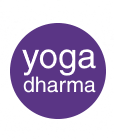BHRAMARI BREATH THE POWER TO TRANSFORM
Bhramari means bee and this practice is called humming bee breath because the practitioner makes a sound that imitates the sound of the black bee. Bhramari is also used in Nada yoga, and as an aid to calm the mind for meditation.
BHRAMARI & NITRIC OXIDE
Studies have found that NO levels increase significantly through humming as opposed to a silent exhalation. Results of case studies suggest humming causes a more efficient gas exchange in the paranasal sinuses.
“According to a 1999 paper by Lundberg and Weitzberg, NO in the nasal airways could represent an important first line of defence against infection. NO is known to be broadly antifungal, antiviral and antibacterial.
impaired breathing leads to poor air circulation and lower levels on beneficial NO in the nose and sinuses, thus creating an environment beneficial for bacterial growth and inflammation.”
Nasal breathing, as opposed to mouth breathing has the advantage of allowing more oxygen to get to active tissues. Nose breathing releases nitric oxide which is necessary to increase carbon dioxide in the blood, which in turn is how oxygen is released. Mouth breathing is a far less effective which means less oxygen in soft tissue.
There are various ways to practice Bhramari, and this method allows for progress and eventually includes bandhas and mudras.
BHRAMARI BREATH -THE PRACTICE
Stage 1.
Sit in a comfortable upright posture and take few moments to relax the whole body. Take special care to relax the jaw, mouth and lips.
Use the index fingers to cover the little ear flaps over the ears. Now take the awareness the centre of the head and Ajna chakra. Maintain a completely still body.
Take and inhale through the nose and then take a controlled exhalation, while making a deep humming sound. The humming should continue until the end of the breath. Feel the sound reverberating within the head.
Practice for 10 rounds. Drop the hands between repletion’s if needed. Gradually increase the length of breaths and the number of rounds. For a therapeutic application practice for up to 30 minutes to relive mental tension and anxiety.
Include Ujjayi on the inhale if desired.
Stage 2.
Practice as outlined so far and now include a retention on the inhalation. With the breath retained turn the full awareness to the at Ajna.
Breath retention should be practiced with caution and awareness and increased gradually. If in doubt seek advice.
Inhale through both nostrils and retain the breath (kumbhaka). To begin with this may be just a slight pause and increase if appropriate. Use Jaladhara and Mulha Bandha if familiar with these practices.
BHRAMARI BREATH-BENEFITS
Contraindications: Don’t practice in supine or with ear infection.
Benefits: Increases levels of Nitric Oxide. The humming creates a calming effect on the nervous system. It is said to be beneficial for insomnia.
BHRAMARI BREATH THE POWER TO TRANSFORM
For information on pranayama classes and courses call Martin on 07787357306, or email martin@yogadharma.co.uk.

